When it comes to the most common types of dogs, the American Kennel Club does a pretty good job of keeping up with canine popularity contests every year. Of course, it’s important to remember that “popularity” and your favorite dog breed will rarely match.
Popularity is more like measuring how many dog owners have specific dog breeds rather than an awards contest. It shouldn’t surprise anyone familiar with AKC statistics that the labrador retriever is a consistent winner, along with golden retrievers.

But there are more than just one or two popular dog breeds out there. There are many dog breeds out there, and everyone is different. One person’s chihuahua is another person’s Doberman pinscher. The AKC (American Kennel Club) creates its top ten based on nearly 200 breeds and almost a million purebred canines annually.
1. Labrador Retrievers
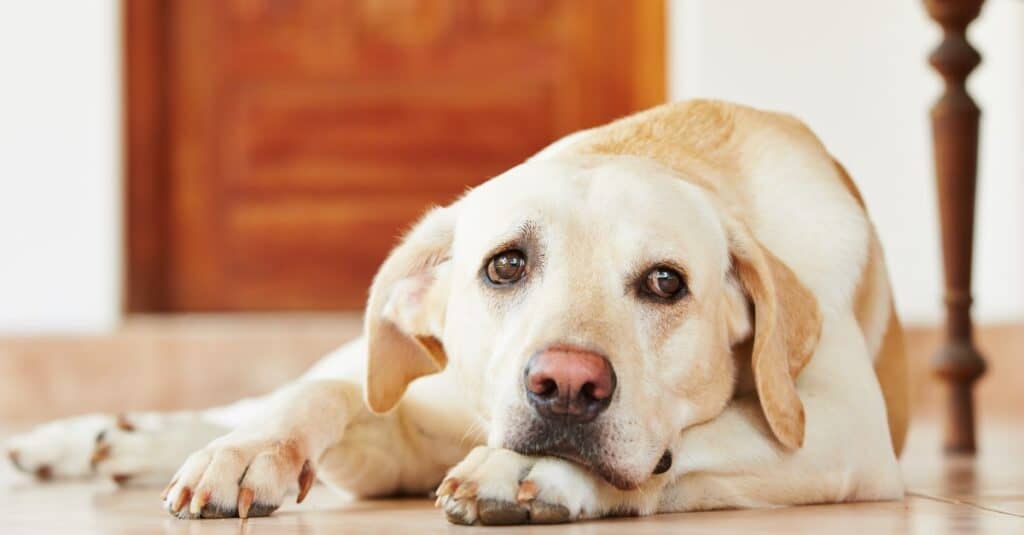
Labrador Retrievers are beautiful, gentle family dogs.
©Jaromir Chalabala/Shutterstock.com
Might as well get this one out of the way first. Since labrador retrievers have been in the top five for over a decade, it only makes sense for them to snag the first spot. It probably has something to do with versatility because so many things make labrador retrievers enormously popular.
They’re family, hunting, working, and guard dogs. Labs are jacks of all trades, masters of none. They make fantastic service dogs and bomb detection dogs because of their intelligence. They’re easy to train, quick to learn new things, and always excited to please.
Labs can learn a massive vocabulary of up to a thousand words—an enormous amount of data for their happy, doggy brains. The sheer volume of capabilities, loyalty, dependability, and willingness to please consistently ranks labrador retrievers highly on any list.
2. Bulldogs

Bulldogs are very sweet and loving dogs, making them great family pets. They aren’t the most intelligent breed, however.
©Ezzolo/Shutterstock.com
For some odd reason, bulldogs tend to be the face of so many companies, universities, high schools, and various programs across the United States. Their enormous popularity plays a small role in the popularity of the Georgia Bulldogs, just to name a single entity.
Their grumpy, dour expression is somehow loveably wrapped in layers of heavy wrinkles. They always seem happy, with an expression that conveys cynicism in its purest form. Bulldogs seem to grow just as much sideways as they do vertically, which adds to their laughable mystique.
Fortunately, that look of cynicism doesn’t translate to actual behavior. Bulldogs are very lovable, mildly-tempered dogs. Bulldogs are working dogs so, making them deceptive in their physicality. They’re more than happy to herd sheep or do just about any other task you put them to.
3. Rottweiler

Rotties possess many beneficial characteristics from their
Rottweiler
DNA.
©McCann Michelle/Shutterstock.com
Despite being taller than bulldogs, Rottweilers look like they could be related to the number two spot. Perhaps a mix between Doberman pinscher and bulldog can explain the muscular, powerful physique of an otherwise black, tan, well-behaved canine.
Rottweilers are fiercely loyal family members who make excellent guards or watchdogs. Much of their popularity is due to their lovable nature, wrapped in an intimidating veneer. Originally bred as working dogs, most Rotties enjoy the laid-back, family life these days. Their intimidating but loving and highly intelligent behavior makes Rotties one of the most common types of dogs.
4. German Shepherd

German Shepherds are smart, loyal, affectionate dogs with a strong protective streak.
©Schelmanova Natalia/Shutterstock.com
Nothing is more quintessentially “police” than a German shepherd. Thanks to their extensive use as police dogs, guard dogs, and military police dogs, they will probably always be associated with the themes of protection.
German shepherds are highly intelligent, versatile, and athletic dogs. They are often considered to be the ultimate working-class dogs, easily filling roles as service dogs, police officers, companions, and guides. German shepherds are often employed as show dogs, further cementing their aura of absolute versatility.
Their name betrays their origin, as they were originally bred to shepherd livestock. Thanks to their high intelligence, you can teach a German shepherd hundreds of commands. All they will do in response is learn quickly and come back for more.
5. Dachshund
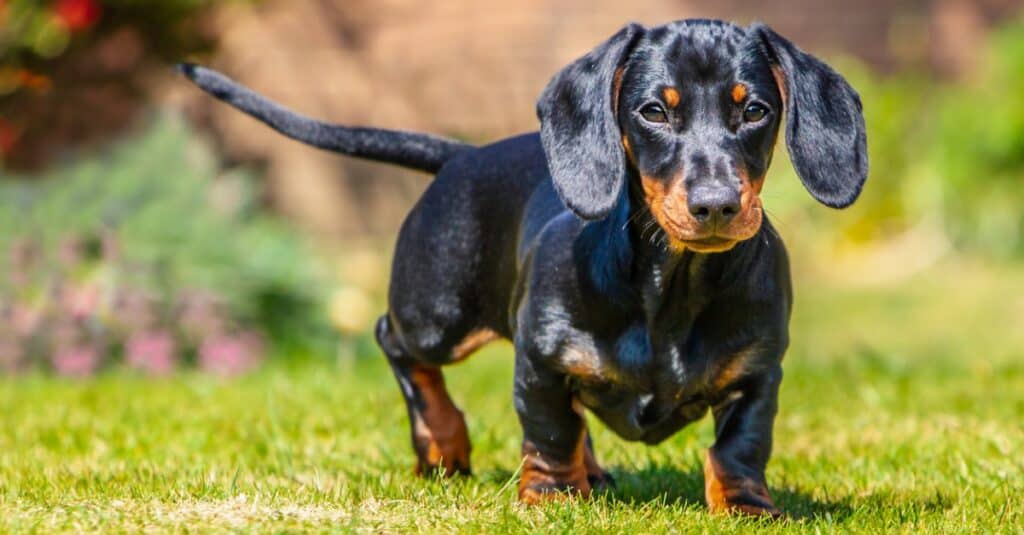
The Dachshund is well-known for its short legs and long body.
©iStock.com/CBCK-Christine
There are two types of these little weiner dogs. Both are small, but one is just smaller. For some reason, these short-legged dogs are tailor-made for hunting down foxes, and that’s what they were originally bred to do.
Those stubby little legs move until the fox can no longer run away. The little Weiner dog that could. These small dogs also come in three hairstyles—smooth hair, wiry hair, and long hair.
Since they were bred to hunt vermin, dachshunds are brave to a fault and will bark at any little noise as if it’s the most dangerous noise in the world. Fortunately, they are also very intelligent and easy to train, especially if you prefer the quieter, calmer dachshund.
6. Boxer

Boxers are one of the most popular breeds in the United States.
©iStock.com/Eudyptula
A boxer’s face is like a bulldog—post-facelift. It’s very difficult to look at a boxer and not crack a smile. Though they aren’t huge dogs and barely qualify as a mid-size breed, they have a sleek, athletic, and intimidating presence.
Boxers adore affection, so you should fully expect a new boxer pup to develop into the perfect lap dog. They’re also high-energy, meaning they need a lot of daily attention, training, and exercise if you want them to grow up without anxiety issues.
7. Doberman Pinscher
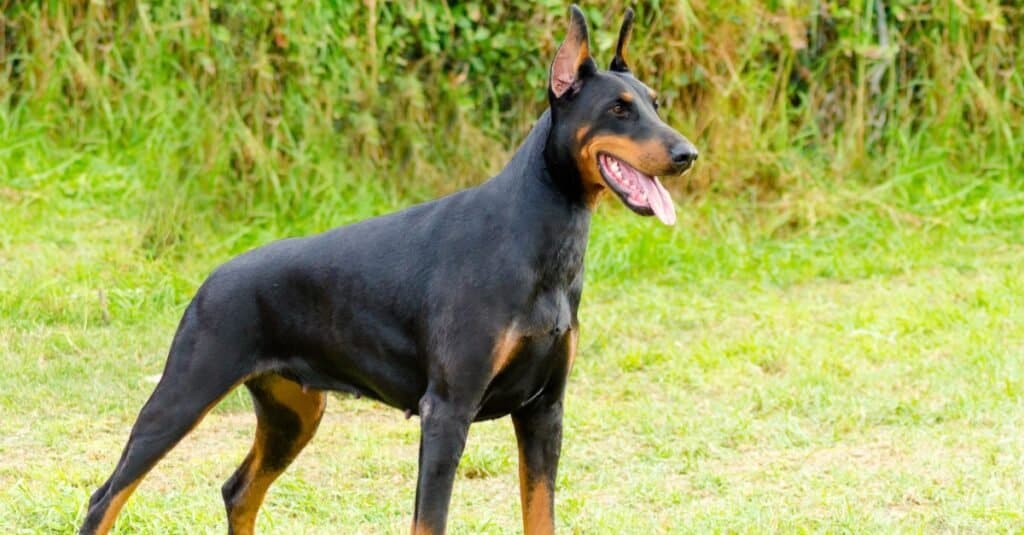
The Doberman Pinscher has a bite force of 245psi.
©iStock.com/f8grapher
Doberman pinschers are like pit bulls, often beginning as an idea in the human consciousness—an idea fraught with danger and fear. However, Dobermans are nothing like that, catching a bad rep from a few bad apples. They’re one of the most common types of dogs because of their incredibly happy and loving nature.
In truth, Dobermans are fiercely loyal companions and more of a lapdog than you might imagine. They also rank consistently in the top five of the most intelligent dogs on the planet. A mid-size breed, Dobermans are athletic, extremely loving, lifelong companions that need exercise and plenty of training to accommodate that intelligence.
8. Great Dane
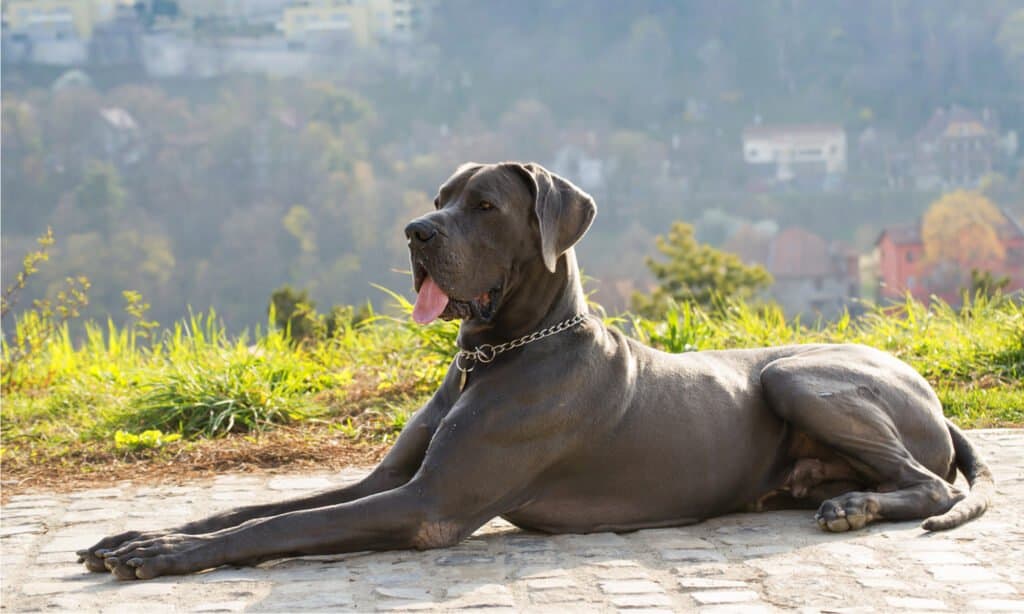
Great Danes are smart, affectionate, loyal pups that will be a great addition to your family!
©belu gheorghe/Shutterstock.com
It seems like the biggest dogs are always the gentlest of creatures, and Great Danes are no exception. A full-grown male great Dane averages 32″ in height and weighs around 175 lbs, which is the average weight of a grown, adult human male.
To a child, a great Dane is a gigantic pony. A great Dane is also one of the most adaptable dogs of all the canine breeds, able to adjust on the fly. They are also loving, hilarious, and happy dogs, willing to hang out or play in equal measure.
9. Siberian Husky
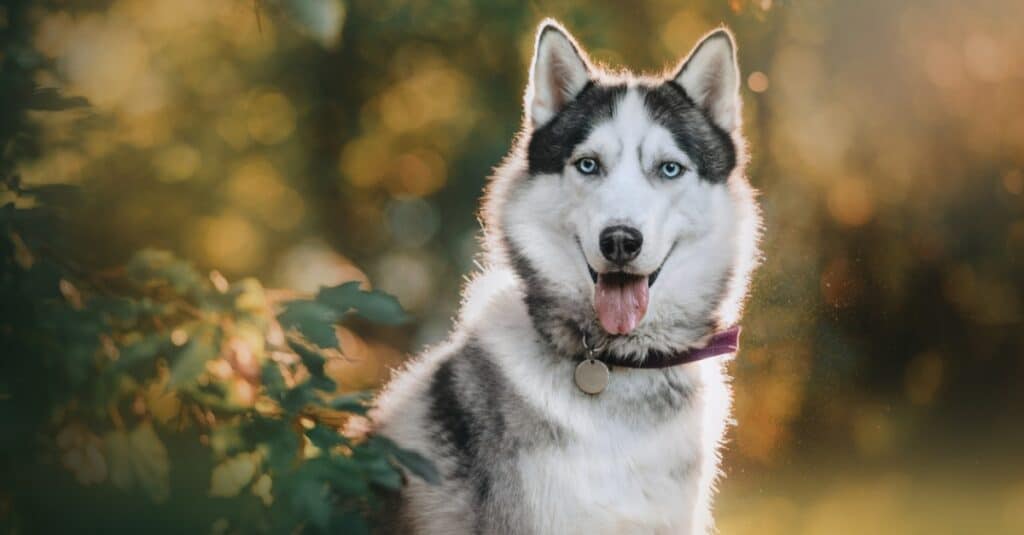
The
Siberian Husky
has striking blue eyes and a high level of intelligence.
©Ksenia Raykova/Shutterstock.com
If you’re looking for a pool of fluff with a handsome face, a husky is where it’s at. These beautiful dogs are head-turners, but there’s more going on than just what’s on the surface. However, they’re powerful working dogs, so be prepared for some serious hiking, jogging, walks, and playtime.
Huskies are your constant companion and will always be by your side in the long run. They can be a little curious. Okay, huskies are walking functions of curiosity. A wealth of exercise and training will keep these intelligent dogs from occasionally walking off the beaten path.
10. French Bulldog

French Bulldogs will wiggle their whole bodies to compensate for not having tails.
©dezy/Shutterstock.com
The French bulldog is the only proper follow-up to a Siberian husky because they’re the physical opposite in every way imaginable. They’re undeniably cute, though. However, “cute” isn’t everything, and French bulldogs are fortunate to have a lot to offer.
Highly energetic and forever youthful in vigor, French bulldogs are one of the most common types of dogs because they are perfectly fine in any environment, be it a small apartment building or a massive, 4-bedroom home. They’re a load of fun in a tiny, little body.
11. Golden Retriever
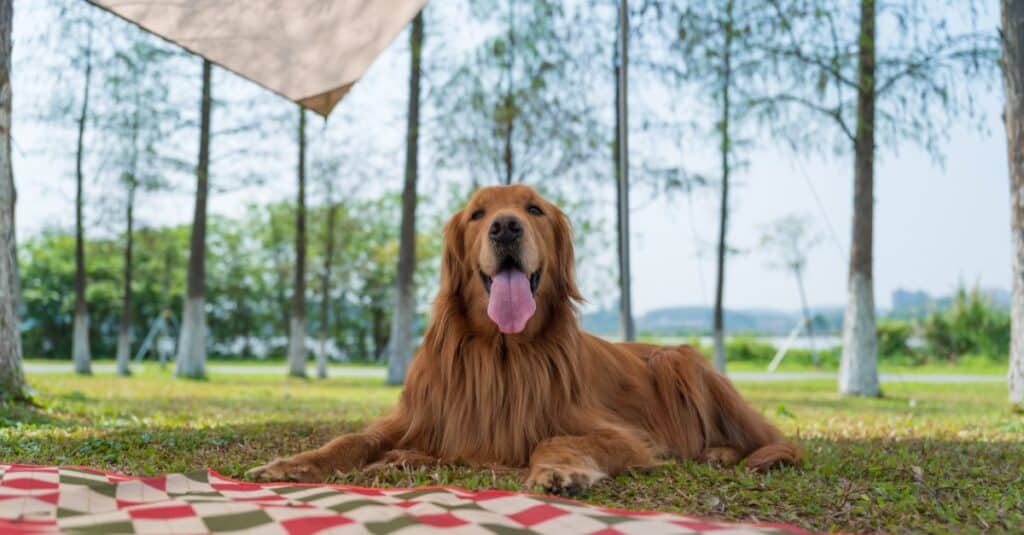
Golden Retrievers are well known for their beautiful coats.
©iStock.com/chendongshan
While these are the most common types of dog breeds, they’re not ordered in terms of popularity. If they were, Golden retrievers would be right there next to labradors. Golden retrievers are hunting dogs at heart and beautiful canines in physical appearance.
Fiercely intelligent and never lacking in energy, they are always ready to go to work, no matter the task at hand. Golden retrievers are never difficult to train because they love being directed and will quickly establish you as the alpha. They are excellent mid-size dogs for a family.
12. Poodles
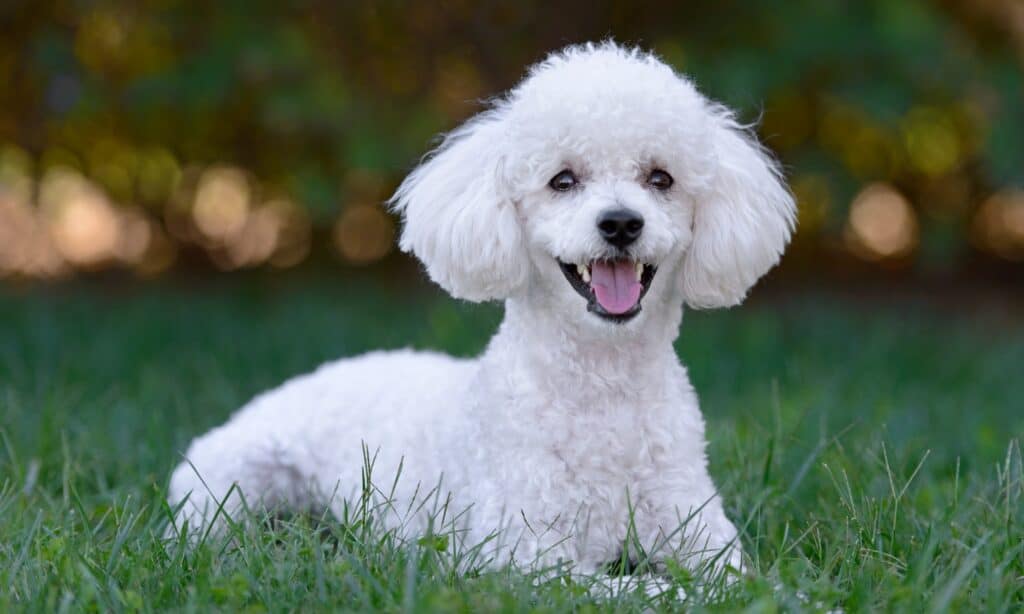
Poodles are very intelligent dogs that can learn up to 200 words.
©iStock.com/tsik
Miniature, toy, and standard—poodles come just about any way you want, including just about every hairstyle in the book. Poodles have probably tested more hairstyles than any other dogs on the planet, and it’s not even close. Fortunately, poodles are also outstanding guide and service animals and are exploding in popularity for that very reason.
While they are often considered show dogs, poodles are surprisingly athletic and highly affectionate, especially with whomever they bond with. They’re also ranked very highly in the intelligence department. Sometimes they can be willful, but that’s only because their intelligence sometimes gets in the way of a good training session.
13. Beagle

Beagles were originally bred for hunting.
©cynoclub/Shutterstock.com
Unless you’re a beagle fan, it’s difficult to draw a picture of one in your mind. Beagles summon up images of small, floppy-eared dogs. In reality, beagles are hard-working, athletic animals originally bred for hunting. They have one of the most powerful noses in the animal kingdom, making them willful and extremely curious.
However, if you harness that curious nature, a beagle is an extraordinary companion, loyal to an absolute fault. Therefore, they also make excellent therapy dogs and guide dogs for the blind, especially with that powerful nose.
14. German Shorthaired Pointer
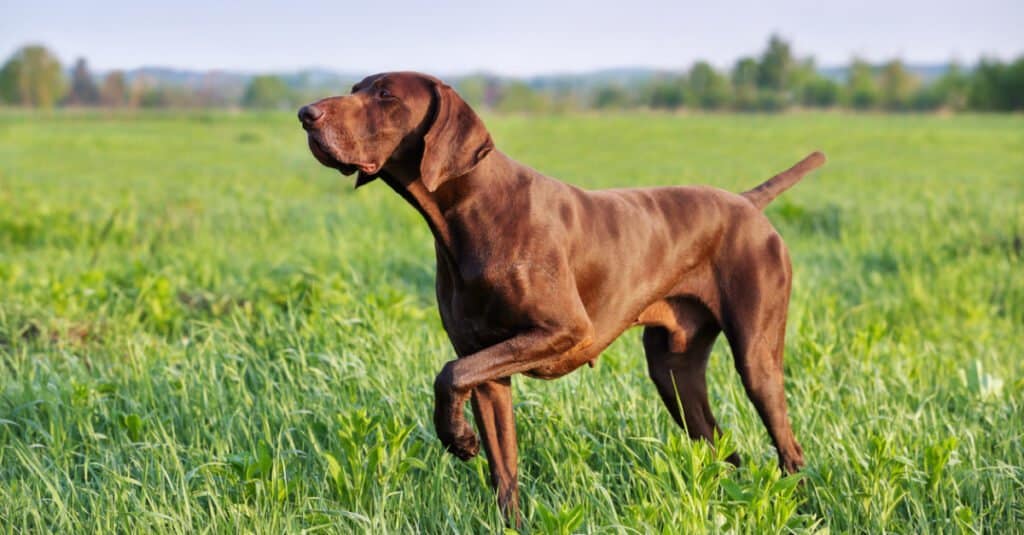
The brown
German Shorthaired Pointer
is eye-catching with its beautiful coat and regal pose.
©Vitalii_Mamchuk/Shutterstock.com
Another canine bred for hunting and retrieval, the German shorthaired pointer is a phenomenal breed that loves hunting, hiking, and working. They are some of the best duck hunting/retrieval dogs in the world because their coats are water resistant and their paws are webbed.
They’re extremely athletic and brave beyond what’s probably in their best interests occasionally. They’re also adaptable and can go through extreme temperature and environmental changes without skipping a beat.
15. Australian Shepherd

Fiercely loyal, the Australian Shepherd develops a strong bond with its owner.
©iStock.com/Bigandt_Photography
The term “Australian” is a bit of a misnomer because the breed was first developed in the United States. So, how did it achieve a decidedly “down-under” spin? Well, it’s mostly because they were wholeheartedly embraced as a sheepdog on the only island continent—Australia.
Because of their affinity for directing livestock, Australian shepherds are high-energy work dogs with a ton of endurance and intelligence to match their physical prowess. On the downside, that means you shouldn’t own this breed if you live in an apartment. They require exercise and thinking challenges to satisfy their adventurous spirit.
All Things Considered
There you have it, fifteen of the most common types of dogs in 2024. Given the track record of the fifteen on this list, it’s hard to imagine any of them being replaced.
All of these dogs make for phenomenal companions, especially if you understand their physical and mental needs. If you can accommodate their various needs and exercise, all of these breeds will find a happy place in your home.
Summary Of The 15 Most Common Types Of Dogs For 2024
| # | Type Of Dog |
|---|---|
| 1 | Labrador Retrievers |
| 2 | Bulldogs |
| 3 | Rottweilers |
| 4 | German Shepherd |
| 5 | Dachshund |
| 6 | Boxer |
| 7 | Doberman Pinscher |
| 8 | Great Dane |
| 9 | Siberian Husky |
| 10 | French Bulldog |
| 11 | Golden Retriever |
| 12 | Poodles |
| 13 | Beagle |
| 14 | German Shorthaired Pointer |
| 15 | Australian Shepherd |
The photo featured at the top of this post is © Eudyptula/Shutterstock.com
Ready to discover the top 10 cutest dog breeds in the entire world?
How about the fastest dogs, the largest dogs and those that are -- quite frankly -- just the kindest dogs on the planet? Each day, AZ Animals sends out lists just like this to our thousands of email subscribers. And the best part? It's FREE. Join today by entering your email below.
Thank you for reading! Have some feedback for us? Contact the AZ Animals editorial team.






